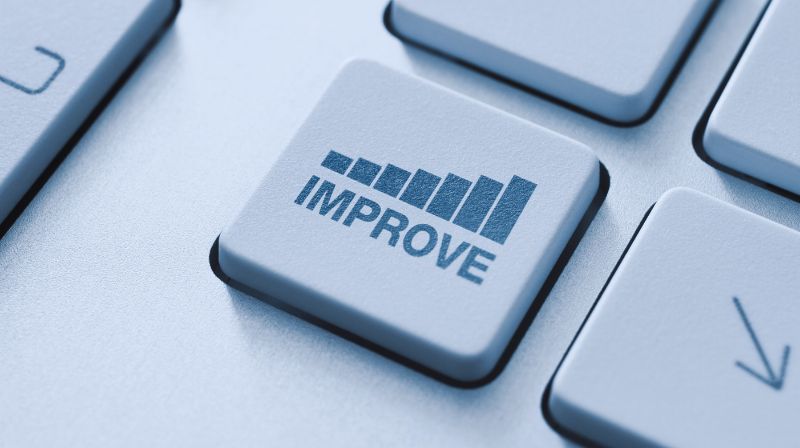Public speaking can be nerve-wracking and challenging for many. Whether you’re presenting at a meeting, delivering a speech, or speaking in front of a large audience, the pressure to communicate effectively often feels overwhelming, but a well-structured program can ease this burden. I’ve been there, struggling to capture the audience’s attention while battling my own nerves.
But don’t worry, there are proven strategies to improve your presentation skills and boost your confidence. In this article, I’ll share ten practical tips that have helped me and many others succeed in public speaking. These tips cover everything from understanding your audience to managing stage presence, providing a way to help you become a more effective presenter.
Ready to take your public speaking to the next level? Read on to discover how you can transform your presentations and make a lasting impact.
1. Understanding Your Audience
Grasping who your audience is and what they need is the cornerstone of a good presentation. Knowing your audience helps you craft a message that resonates and engages, making your communication more impactful. Whether you’re speaking to industry professionals, students, or a general audience, understanding their backgrounds, interests, and expectations allows you to tailor your presentation to address their specific needs and concerns.

Identifying Your Audience’s Needs
To identify your audience’s needs, start by researching their demographics and interests. Are they experts in your field or are they new to the topic? What are their key concerns or challenges? This information can often be gathered through surveys, feedback forms, or informal conversations. Understanding these factors helps you focus on the most relevant content, ensuring that your presentation addresses their pain points and interests.
Tailoring Your Content to Your Audience
Once you’ve identified your audience’s needs, the next step is to tailor your content accordingly. Adjust the complexity of your language, use examples that resonate with their experiences, and highlight points that are most relevant to them. For instance, if you’re speaking to a group of professionals, incorporate industry-specific jargon and case studies. Conversely, for a general audience, simplify complex concepts and use relatable analogies. Tailoring your content ensures that your message is clear, engaging, and valuable to your audience, enhancing the overall effectiveness of your presentation.
2. Mastering Practice Techniques
Mastering the art of public speaking requires more than just knowing your material; it involves honing your delivery through consistent and effective practice. Proper rehearsal not only helps you become more familiar with your content but also boosts your confidence and allows you to refine your presentation skills. By dedicating time to practice, you can address potential issues, improve your timing, and ensure that your delivery is smooth and engaging.
The Role of Rehearsal
Rehearsal is crucial in transforming your presentation from a mere collection of ideas into a polished performance. Regularly practicing your speech helps you become comfortable with your material and reduces the likelihood of errors. It also provides an opportunity to experiment with different delivery styles, adjust your pacing, and identify areas that need improvement. Practice sessions should mimic actual speaking conditions as closely as possible, including speaking out loud, using visual aids like PowerPoint, and, if possible, practicing in front of a test audience.
Effective Practice Strategies
To maximize the effectiveness of your practice, employ strategies that enhance your preparation. Start by breaking down your presentation into manageable sections and practice each part individually. Use a timer to ensure you stay within your allotted time and make adjustments as needed, which is a crucial way to help manage your presentation effectively. Record yourself during practice sessions to review your performance, paying attention to your tone, body language, and pacing, which can help you learn how to improve. Additionally, practicing in front of a trusted friend or colleague can provide valuable feedback and help you address any weaknesses. By incorporating these strategies, you can refine your presentation skills and increase your chances of delivering a compelling and memorable performance.
3. Utilizing Feedback for Improvement
Feedback is a powerful tool for enhancing your public speaking skills. By actively seeking and incorporating feedback, you can gain valuable insights into your performance and identify areas for growth. Constructive feedback not only highlights your strengths but also points out areas that need improvement, helping you refine your presentation and delivery techniques. Embracing feedback with an open mind allows you to continually evolve and become a more effective speaker.
How to Gather Constructive Feedback
Gathering constructive feedback involves seeking input from various sources to get a well-rounded view of your performance. Start by asking for feedback from trusted colleagues, mentors, or friends who can offer honest and specific critiques. You can also use feedback forms or surveys to collect input from your audience. Pay attention to both verbal and non-verbal cues during and after your presentation. Look for patterns in the feedback you receive, focusing on recurring themes and suggestions. This comprehensive approach helps you gather actionable insights that are crucial for your improvement.
Implementing Feedback to Enhance Performance
Once you have gathered feedback, the next step is to implement it effectively. Analyze the feedback to identify key areas for improvement and create a plan to address them. For instance, if feedback indicates that your pacing was too fast, work on slowing down and emphasizing key points. Practice incorporating the suggestions into your next presentation to see how they affect your performance. Regularly revisiting and adjusting based on feedback ensures that you continuously improve and adapt. By actively applying feedback, you enhance your presentation skills, making your future performances more impactful and engaging.
4. Personalizing Your Presentation
Personalizing your presentation makes it more engaging and relatable to your audience. When you infuse your own experiences and style into your speech, you create a unique connection with your listeners. Personalization not only helps to capture attention but also makes your message more memorable. By concluding effectively, you ensure that your audience walks away with a clear understanding of your main points and a positive impression of your presentation.

Adding Personal Stories and Anecdotes
Incorporating personal stories and anecdotes can significantly enhance your presentation. Stories make your content more relatable and can illustrate key points in a way that’s both engaging and memorable. Choose stories that align with your topic and audience, and make sure they are relevant to the points you are making. Personal anecdotes can also humanize you as a speaker, allowing your audience to connect with you on a personal level. The key is to use these stories to underscore your main messages without overshadowing them.
Infusing Your Unique Style
Infusing your unique style into your presentation helps you stand out and makes your delivery more authentic. Whether it’s through your speaking tone, humor, or body language, showcasing your personality can make your presentation more engaging. Think about what makes you unique as a speaker and how you can incorporate those elements naturally into your delivery. Avoid trying to mimic others; instead, focus on what feels genuine to you. By blending your personal style with your content, you create a presentation that is not only informative but also distinctly your own.
5. Enhancing Non-Verbal Communication
Non-verbal communication plays a crucial role in delivering a good presentation. It encompasses your body language, facial expressions, and gestures, all of which are good presentation skills. Enhancing your non-verbal communication ensures that you reinforce your spoken words and create a more engaging and persuasive presentation, making you a more effective public speaker. By paying attention to these non-verbal cues, you can connect better with your audience and convey your message with greater clarity and good presentation skills.
The Power of Eye Contact
Eye contact is one of the most powerful tools in non-verbal communication. It delivering a good presentationhelps establish a connection with your audience and conveys confidence and sincerity. By making eye contact, you engage your listeners and make them feel included in the conversation, which is essential for a good presentation. It also helps you gauge their reactions and adjust your delivery in real time. Aim to make eye contact with different people in the audience to create a sense of inclusiveness and to keep them focused on your message.
Effective Use of Body Language
Your body language can greatly enhance or detract from your message. Effective use of body language includes maintaining an open posture, using purposeful gestures, and moving confidently. Avoid crossing your arms or using excessive gestures that might distract from your content. Instead, use hand movements to emphasize key points and maintain an upright, open stance to project confidence, which is essential for any presenter. Moving around the stage can also help keep the audience engaged and make your presentation more dynamic. By being mindful of your body language, you reinforce your verbal messages and create a more compelling and engaging presentation.
6. Managing Stage Presence
Managing your stage presence is crucial for delivering a compelling and confident presentation. It involves how you use the physical space, your movements, and how you engage with the audience. Strong stage presence helps to captivate your audience, convey your message with authority, and make a lasting impression. By mastering stage presence, you enhance your overall effectiveness as a speaker and create a more engaging experience for your audience.
Using the Stage Effectively
Using the stage effectively involves making full use of the space available to you. Move around the stage to engage different sections of the audience and maintain their attention, which is a powerful way to help connect with your listeners. Avoid staying in one spot, as this can appear static and disengaging. Use the stage to emphasize key points by positioning yourself where you can be seen and heard clearly. Incorporating movement into your presentation can help illustrate your message and make it more dynamic. Be mindful of not overusing the space, as excessive movement can be distracting. Instead, aim for a purposeful and deliberate movement that complements your content.
Strategies for Confident Movement
Confident movement on stage contributes significantly to your overall stage presence. Practice moving with purpose and avoiding nervous habits like pacing or shifting weight from one foot to the other. Use deliberate gestures to underscore important points and help guide the audience’s focus. Incorporate pauses and strategic movement to create emphasis and build anticipation. Standing tall with good posture and making intentional movements reinforces your confidence and helps project authority. By rehearsing your movement and being mindful of how you use the stage, you can enhance your delivery and make your presentation more engaging and impactful.
7. Techniques to Calm Nerves
Feeling nervous before a presentation is common, but with the right techniques and time to prepare, you can manage and overcome these nerves to deliver a more confident and effective performance. Calming your nerves involves both physical and mental strategies that help you feel more relaxed and focused. By incorporating these techniques into your preparation routine, you can reduce anxiety and improve your overall presentation experience.

Breathing Exercises and Relaxation Techniques
Breathing exercises and relaxation techniques are essential tools for calming pre-presentation jitters. Deep, controlled breathing helps lower your heart rate and reduces feelings of anxiety. Practice diaphragmatic breathing by inhaling deeply through your nose, allowing your abdomen to rise, and exhaling slowly through your mouth. This type of breathing can help you maintain calm and focus. Additionally, relaxation techniques such as progressive muscle relaxation, where you tense and then relax different muscle groups, can further ease physical tension and promote a sense of calm.
Mental Preparation and Visualization
Mental preparation and visualization are powerful techniques for managing nerves and boosting confidence. Start by visualizing yourself giving a successful presentation, focusing on positive outcomes, and feeling confident. Picture the audience responding positively and yourself handling any challenges with ease. This mental rehearsal helps reduce anxiety by creating a sense of familiarity and control. Combine visualization with affirmations to reinforce your confidence and remind yourself of your capabilities. By mentally preparing for your presentation, you set a positive mindset that can significantly impact your performance and help you stay calm under pressure, which is important for a good presentation.
8. Recording and Reviewing Your Presentations
Recording and reviewing your presentations is a valuable practice for improving your public speaking skills. By capturing your performance on video, you gain an objective perspective on how you come across to your audience. This process allows you to identify strengths and areas for improvement, making it easier to refine your delivery and enhance your overall presentation effectiveness.
Benefits of Self-Recording
- See and hear yourself as your audience does: Helps identify issues with delivery, like distracting mannerisms or unclear speech.
- Make targeted adjustments: Use self-awareness to refine your presentation style.
- Highlight effective techniques: Spot what works well and replicate those strategies in future presentations.
- Build confidence: Critically observing your performance aids in consistent improvement.
Analyzing and Learning from Recordings
Analyzing your recorded presentations involves closely reviewing the footage to identify areas where you can enhance your performance. Pay attention to aspects such as your tone, pacing, body language, and audience engagement. Look for patterns in your delivery that might need adjustment, such as overuse of filler words or lack of eye contact. Make notes on specific areas for improvement and develop a plan to address them in your next practice session. By regularly analyzing and learning from your recordings, you continually refine your skills and adapt your presentation techniques, leading to more polished and effective performances.
9. Crafting a Memorable Conclusion
Creating a memorable conclusion is essential for leaving a lasting impression on your audience. A strong ending not only reinforces your key messages but also helps to tie together your presentation and make it more impactful. By concluding effectively, you ensure that your audience walks away with a clear understanding of your main points and a positive impression of your presentation.
Techniques for a Strong Ending
To create a strong ending, focus on summarizing your key points succinctly and powerfully. Reiterate the main takeaways of your presentation to reinforce the core message. Incorporate a compelling call-to-action or a memorable quote that aligns with your topic to leave a lasting impact. Consider using a story or anecdote that ties back to your introduction, providing a sense of closure and cohesion. A well-crafted conclusion not only wraps up your presentation but also engages the audience emotionally, making your final message more memorable and impactful for the public speaker.
Ensuring Your Message Sticks
Ensuring your message sticks involves reinforcing your main points and making them resonate with your audience. Use repetition strategically to highlight important concepts, and link your conclusion back to the key messages from your presentation. Visual aids or summaries can help reinforce your points and make them more memorable. Additionally, ending with a thought-provoking question or a call to action encourages your audience to reflect on your message and take further action. By using these techniques, you enhance the likelihood that your audience will remember and act on the information you’ve presented.
10. Additional Resources for Improvement
To further enhance your public speaking skills, leveraging additional resources can provide valuable opportunities for growth and development. Engaging with various learning tools and communities allows you to practice, receive feedback, and observe different speaking styles, all of which contribute to becoming a more effective and confident speaker. Exploring these resources helps you stay motivated and continuously improve your presentation abilities.

Joining Public Speaking Groups
Joining public speaking groups offers a supportive environment where you can practice your skills regularly and receive constructive feedback. Organizations like Toastmasters International provide structured settings for improving your public speaking and leadership abilities. Being part of a group allows you to practice in front of an audience, learn from others’ experiences, and gain insights into various speaking techniques. The feedback and encouragement from fellow members can significantly boost your confidence and help you refine your delivery, ultimately making you a better public speaker.
Attending Workshops and Classes
Attending workshops and classes specifically focused on public speaking provides hands-on training and professional guidance, offering numerous ways to improve your skills. These educational opportunities often include practical exercises, expert tips, and personalized feedback. Workshops and classes are designed to address various aspects of public speaking, from overcoming stage fright to mastering effective delivery techniques. By participating in these programs, you gain access to expert knowledge and tailored advice that can accelerate your improvement and help you tackle specific challenges.
Watching Effective Speakers
Watching effective speakers is an excellent way to learn and be inspired by different presentation styles and techniques. Observe how experienced speakers engage their audiences, structure their messages, and use non-verbal communication. Platforms like TED Talks and industry conferences showcase a variety of speaking styles and topics, offering valuable examples of effective communication. Analyzing these presentations can provide insights into successful strategies and help you incorporate similar techniques into your own speaking practice. By learning from the best, you can adapt and enhance your approach to public speaking, which is important for developing good presentation skills.
FAQs
What are the 10 tips for public speaking?
The 10 tips to improve your presentation skills include understanding your target audience, mastering practice techniques, utilizing feedback, personalizing your presentation, enhancing non-verbal communication, managing stage presence, calming nerves, recording and reviewing, crafting a memorable conclusion, and exploring additional resources to help you feel more confident.
How to improve presentation skills and public speaking?
To improve presentation skills and public speaking, practice regularly, seek feedback, personalize your content, manage your stage presence, and utilize non-verbal communication effectively. Attending workshops and watching skilled speakers can also provide valuable insights on how to improve.
What are five ways that you can improve your public speaking skills?
Five ways to enhance your public speaking skills include practicing regularly, incorporating feedback, personalizing your presentations, mastering non-verbal communication, and managing stage presence effectively. Each of these methods will help you build confidence and improve your delivery.
What are the 7 presentation skills?
The 7 presentation skills important for effective speaking are understanding your audience, organizing content, practicing delivery, using visual aids, engaging with the audience, managing nerves, and effectively concluding your presentation.
What are some effective tips to improve your presentation skills?
To make your presentation more effective, consider practicing multiple times, taking deep breaths to manage pre-presentation jitters, and actively engaging with your audience throughout your presentation. These strategies help you connect with your audience and feel more comfortable.
How can I create an effective presentation that keeps my audience engaged?
Creating an effective presentation involves using visually appealing slides, having a clear structure, and including interactive elements to help keep your audience engaged. Personal anecdotes or stories can also make your message more relatable and memorable.
What is the best way to take deep breaths before giving a presentation?
Before giving a presentation, find a quiet space to take deep breaths. Inhale deeply through your nose for a count of four, hold for four, and exhale through your mouth for a count of four. This technique helps get oxygen to your brain and calms your nerves.
How can I actively engage my audience during my presentation?
To actively engage your audience, ask questions, encourage participation, and use multimedia elements like videos or polls. Maintaining eye contact and inviting audience members to share their thoughts will also help you connect with them and keep their attention.
Why is it important to rehearse your presentation?
Rehearsing your presentation is crucial as it allows you to familiarize yourself with the content, manage time effectively, and identify areas that need improvement. Practicing helps you feel more confident and reduces anxiety when speaking in front of an audience.
How can I transform my anxiety into positive enthusiasm during a presentation?
To transform anxiety into positive enthusiasm, focus on the message you want to convey rather than on the fear of speaking. Visualize a successful presentation, practice deep breathing, and remind yourself that your audience is there to learn from you, not to judge you.
What should I do at the end of my presentation to leave a lasting impression?
At the end of your presentation, summarize the main points, thank your audience for their time, and provide a call to action or offer an opportunity for questions. This helps reinforce your message and leaves your audience with something to think about.
How can time management improve my presentation skills?
Good time management allows you to adequately prepare and practice your presentation, ensuring you cover all necessary points. By allocating time for each part of your presentation and sticking to it, you help maintain audience engagement without rushing.
What role does self-confidence play in effective presentation skills?
Self-confidence is key to effective presentation skills. When you believe in your message and your ability to communicate it clearly, you’re more likely to engage your audience and deliver a memorable presentation. Practicing and preparing can help build this confidence.






